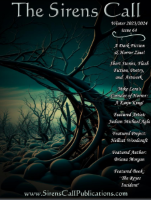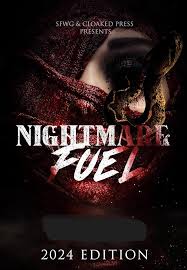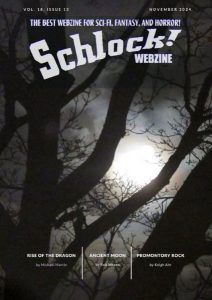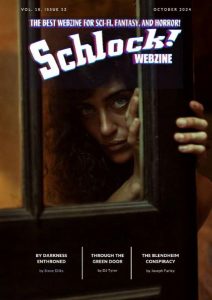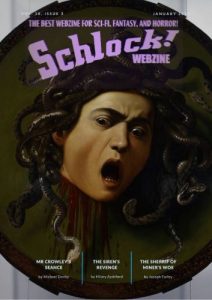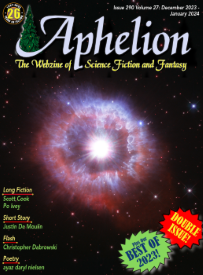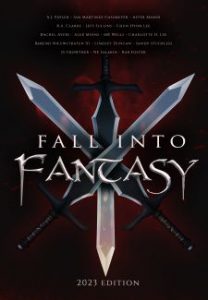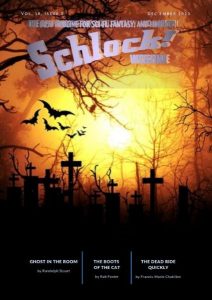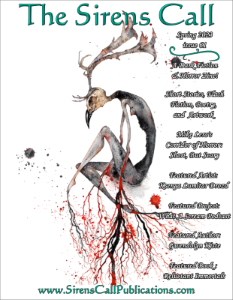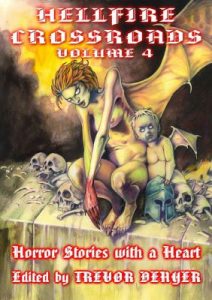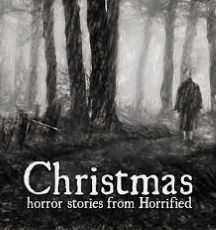
© Schlock! Webzine
Jim Mountfield is the pseudonym I attach to fiction I write that’s dark and macabre in nature, and I’m delighted to report that a new Mountfield short story has just appeared in Volume 19 Issue 6, the July 2025 edition, of Schlock! Webzine. It’s entitled Slot Boy and it takes place in Scotland, against an appropriately Scottish backdrop of parochial wee towns, middle-aged neds, cranky auld wifies, mobility scooters, and terrible football.
Despite its Scottish setting, Slot Boy – like many of my stories – owes a lot to the works of Stephen King. Although the inspiration for this particular story comes from something I suspect King isn’t in a hurry to trumpet as one of his finest hours, the anthology movie Creepshow 2 (1987), which was a sequel to the rather better Creepshow (1982). One of the three segments in Creepshow 2, The Raft, was based on a short story included in King’s 1985 collection Skeleton Crew, but the other two segments, Old Chief Wood’nhead and The Hitchhiker, were apparently stories he devised especially for the film. He wrote an outline that was then polished into a script by legendary horror filmmaker director George A. Romero, though the final movie was directed by Michael Gornick.
Weirdly, it was Old Chief Wood’nhead that inspired Slot Boy.
The Raft and The Hitchhiker both have their moments, but Old Chief Wood’nhead is rightly regarded as the worst of Creepshow 2’s stories. That’s despite it featuring the stalwart character actor George Kennedy (a man I always associated with crashing airplanes – he was in 1965’s Flight of the Phoenix and all four of the 1970s’ Airport movies) and Dorothy Lamour, star of the Bob Hope / Bing Crosby Road to… movies (1940-62). Kennedy and Lamour play an elderly couple who own a shop with a hulking, timber cigar store Indian, the titular Old Chief Wood’nhead, standing outside it. Predictably, bad things happen to them. Then, magically, seeking revenge, Old Chief Wood’nhead comes to… Well, you can guess the rest.
Native American culture is a rich source of stories and myths – see the works of Stephen Graham Jones – but Old Chief Wood’nhead operates at the level of a crass old Hollywood western, with a caricatured ‘injun’ shooting arrows, removing scalps and wielding a tomahawk. Of course, the horror in the story, or in any horror story, is nothing compared to the real-life horrors that North America’s native American population had to endure during history. Estimates suggest that population stood at about eight million in the whole continent in 1492; but in the USA, by 1890, it’d been reduced to a quarter of a million. Though no doubt Trump will soon rewrite all that and have it taught in schools that life was peachy for Native Americans after European settlers arrived.
If Old Chief Wood’nhead was a bit asinine, why on earth did I think of it again after so many years, let alone get an idea for a story from it? Well, for the first two years that I lived in Singapore, I regularly ate and drank in an establishment on Singapore’s Mountbatten Road that, bizarrely, had this standing on the edge of its premises:

I don’t think I ever saw a cigar store Indian during my time in Scotland, but shops there used to have other figurines standing outside their doors, usually for charity purposes. One of those figurines features in Slot Boy and plays a role in the story similar to that played by Old Chief Wood’nhead in Creepshow 2. I just hope the result is scarier – and funnier – than the movie segment.
During July 2025, you can read Slot Boy here, while the main page of Schlock! Webzine, Volume 19 Issue 6, can be accessed here.

© Laurel Entertainment / New World Pictures


